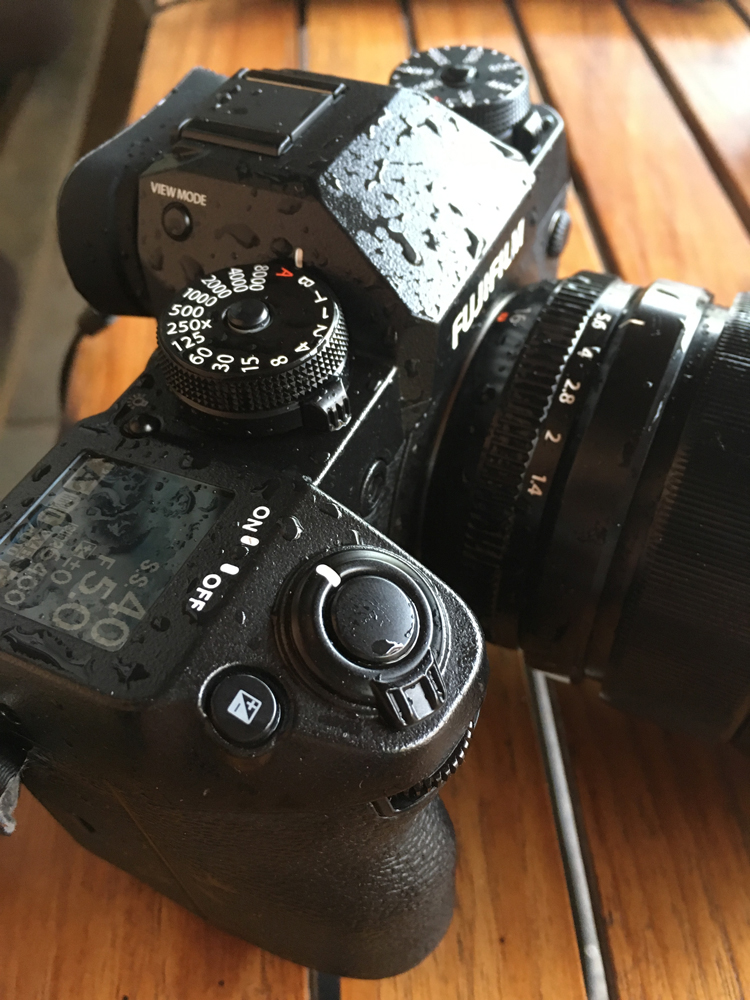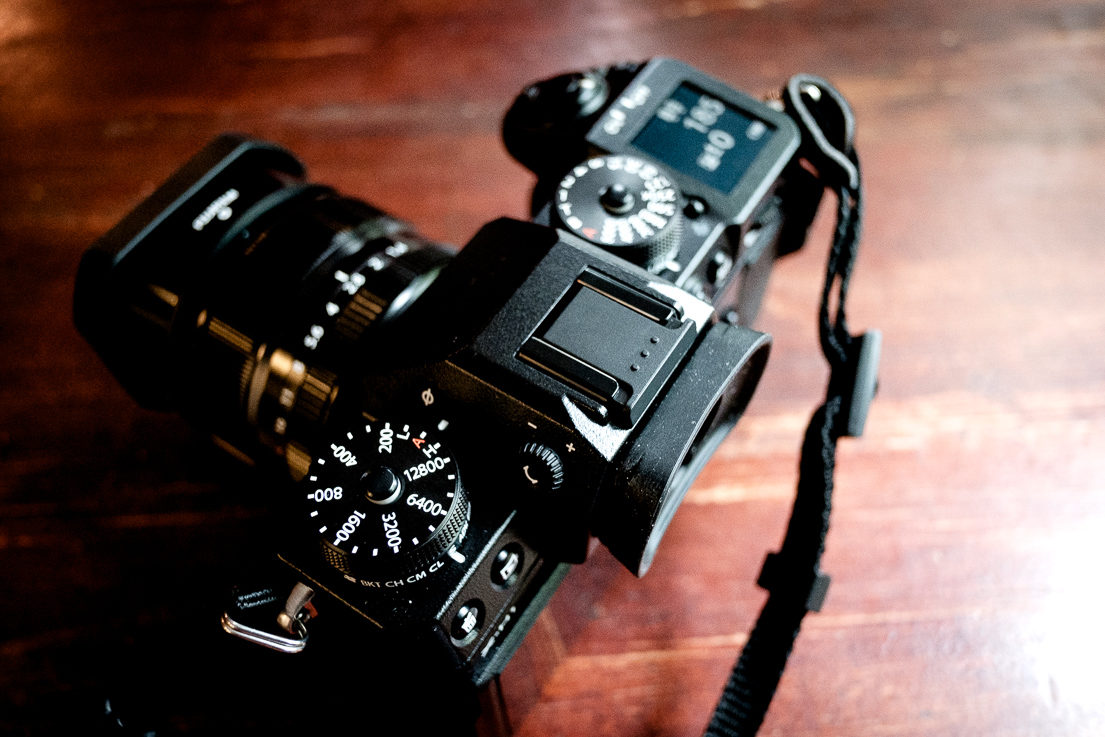More racehorse than donkey | The Fujifilm X-H1
This is the second part of a collection of thoughts about the Fujifilm X-H1. You can find the first part here.
Introduction
Basically, I wouldn’t call this post a full review in the actual sense. Neither do I describe the camera in detail, nor do I deal with things that are identical or comparable to some other Fujifilm X cameras (image quality, processor, system, etc.). You can check these points in detail elsewhere in this blog, for example here, here or in my guest contribution to FujiLove.com. The overall quality or usability of the Fujifilm X cameras is out of question for me.
Apart from that, the camera has been on the market for more than a year now. Therefore, you can find such information much better on many other websites. For example, I would recommend the reviews by Jonas Rask or Bert Stephani. Or – if you have doubts about the supposedly too positive opinion of these official X photographers – you can also read the very critical statement of the Greek X photographer Vassilios Zacharitsev. And of course you shouldn’t forget Nasim Mansurov’s detailed review.
Here, I’m only referring to some important unique selling points of the camera as well as to the known criticisms or peculiarities of the X-H1. And all I’m talking about is (still) photography. I don’t make videos and therefore I can’t say anything about the camera’s abilities in this field.
Now, let’s get down to business:
IBIS
For me this point is THE main argument for buying the X-H1. I got to know this feature and fell in love with it when I was using Olympus OM-D cameras a couple of years ago. It’s a great thing for my kind of photography, especially for documentary work in available light. Having that on board now with Fujifilm is a big plus for me
The IBIS basically works very well in practice. Although I can’t confirm Fujifilm’s stated effectiveness of 5 or even 5.5 f-stops (with the XF35F1.4), in my opinion this also applies most other cameras with IBIS available on the market. In my experience so far, sensor size simply plays the most important role here, even more so than technology leadership. Olympus seems to be ahead with the small m43 sensor. In comparison, the Sony FF cameras, which I was able to try out, definitely can’t keep up with that. And the Fujifilm X-H1 with the APS-C sensor seems to be somewhere in the middle. In real life, I feel like I can get an advantage of about 3 to 3.5 f-stops depending on my coffee consumption and the lens I use, which is really good. Everything else is more advertising than reality. Of course, this is a point that I can only judge really well after a long period of use. So that’s just a first impression.
A phenomenon, which at first worried me very much, you can see in the images below. In some cases I noticed that a fast second or third shot (the follow-up shot) was often not sharp. Of course, that would be a bug that can hardly be forgiven – after all, this shot is often the decisive one. Back at home I took a closer look at it and couldn’t explain it to myself based on the images and the respective situation. Until I looked at the firmware version… the camera was probably already longer in the shelf at my dealer. 😉
Note: If you have problems with the IBIS, this could be due to an old firmware version! I didn’t notice that my new camera still had firmware version 1.02 (!) installed. I will keep an eye on it because I’m not sure yet if that was really the reason. But so far, I couldn’t reproduce this behaviour with the current firmware version 2.01. Otherwise I’m really satisfied with the IBIS of the X-H1 so far.
The EVF
In one word: exceptional! If I get this right, it’s the same EVF as the newer X-T3. This one is big, bright, has a super high resolution at a high refresh rate and therefore it is the second important selling point for this camera. It’s a real dream to work with it. Period.
The shutter
Another major difference compared to the X-T2 or X-Pro2 can be found in the camera’s shutter. It is so well dammed that even the mechanical shutter is unbelievably quiet – so quiet that it can hardly be heard outside in normal ambient noise. I honestly don’t know if this was planned just to minimize the noise or if it’s a by-product of the effort to make the camera more shake-free in general. Anyway, it’s very remarkable. Maybe not as quiet as a leaf shutter, but really not far away from it. I have to admit that it confused me a little at first. Especially when I was shooting from the hip or near the ground, it was difficult to tell if the photo was really taken. However, in the vast majority of cases this is a very welcome improvement.
The shutter-release button
This is a completely different story and has already been controversially discussed by many Fujifilm photographers. The shutter-release button is highly sensitive, has a very short release way and the AF point (half-pressed button) is hardly defined. To cut a long story short: I personally don’t like this kind of shutter-release button very much. But it didn’t take me more than half a day to get used to it and then it has the advantage that the camera becomes extremely responsive. However, I agree with Jonas Rask that the camera has been optimized for back-button focusing here.
And here comes the good news: The AF-ON button is so well positioned – at least for my hands – that I can actually use it. I’ve never done this on a camera before, because I never found a button that I could operate with a natural hand position. I don’t think I’ll do this in every case, but it’s pretty cool for shootings.
The top LCD
This is another sensitive issue. Many users complain that the exposure correction wheel has fallen victim to the new LCD. I can understand that in principle, but it’s not that bad. Because this “loss” is relatively cleverly compensated here. The combination of the rear dial with the exposure-correction knob right to the shutter-release button works just as well. And since there is the LCD display, the argument that you wouldn’t see the correction at first sight doesn’t apply either. This is displayed there.
On the other hand, the display is also very practical. It has two small advantages that often go unnoticed. First, even when the camera is turned off, you can see immediately whether the battery is full. And secondly – much more important for me – you can see whether the SD cards are inside the camera. One look at it and you never go out without cards in the camera again. 😉
The autofocus
I have no idea how well the continuous autofocus works. I also don’t know how good all the AF configuration options are. Simply because I never use both. The only thing I can say is that I am very happy with the speed and precision of the AF. But that’s actually been the case since the second generation of the Fujifilm X cameras – at least after some of the firmware updates. So there’s nothing new for me to report here.
Battery life
Let us now come to one of the most frequently mentioned points of criticism: battery life. It would be untrustworthy for me to make a final statement here. In contrast to the operations and some other things, I have to look at it over a longer period of time. But the first impression is that, despite IBIS, the better EVF and more power, the battery life is about the same as with the X-T2 – maybe a little less. I didn’t change the battery in two days of hiking where I made around 300 images… that’s enough for me. As with all statements, this refers to photography, not filming. Allegedly, the battery is supposed to run out quickly there, but I can’t say anything about that. Whereby, obviously at least Palle Schulz didn’t have big problems with this. However, battery life will certainly never be a strength of this camera. That should be clear to everyone. 😉
Ergonomics and handling
Apart from the basic fact that the camera is actually too big and too heavy for me: the ergonomics are very good! I can’t understand the statements made here and there that the camera is so unergonomically. Exactly the opposite is the case. I have excellent access to all buttons, their tactile feeling is very good (except the shutter-release button, see above) and the grip is also excellent. The only point that bothers me is the playback button on the left – which is also the case with the X-T2/3. I like to operate the camera with one hand and sometimes I want to check a picture quickly in the EVF. But OK, I simply put the playback function on the front FN button and solved the small problem for me.
In summary, I have to say that handling and ergonomics are really excellent. With the larger lenses, it is even unsurpassed within the entire line-up of the Fujifilm X cameras.
The “Vertical Power Booster Grip”
What a name! Like it or not, that’s your decision. This thing is actually much too big for me and I will probably never need it either. I bought it anyway for a simple reason: The kit costs 100€ more and for this money I not only got the grip, but two extra(!) batteries. So, it’s a no brainer and who knows, maybe I’ll film with it and then the grip is definitely practical.
Durability and build
It’s built like a tank. I never doubted the durability of the other Fujifilm X cameras, but the X-H1 even feels a bit more solid than for example the X-T2. It’s sturdy and waterproof as usual. I had it permanently hung around my shoulder for two days while hiking on the weekend, without a bag or any other protection. It was very wet and rainy these days… and I didn’t even think about whether it could damage the camera.
This and that
Apart from my all-time complaint about the display modes (please Fujifilm, give me finally the opportunity to disable the rear display BUT show the Q menu on it nevertheless), I have little reason to complain. Personally, I don’t like the eyecup that comes with the X-H1 (EC-XT L). It’s arguably good against side light, but it does not work well with glasses. And for me as a left-eye user it’s uncomfortable since it hurts a little bit if I press the camera too much towards my face. I solved this little problem by buying the smaller and less pronounced eyecup EC-XT M. I think, it’s the same as comes with the Fujifilm X-T2/3. For people who wear glasses even the smaller EC-XT S may be better suited. What’s very good here is that you have a choice. All three of these eyecups as well as the round one of the Fujifilm GFX 50S fit on the X-H1 and vice versa.
Apart from that, I can’t think of anything else to bother me right now.
(Preliminary) Conclusion
Surprise, surprise… I still don’t love this camera that much, but I have to admit that objectively speaking it’s definitely quite great. The Fujifilm X-H1 is simply an incredible performer. Apart from the at least questionable shutter-release button (and that’s also a matter of taste and getting used to), this camera doesn’t show a real slip-up. OK, maybe the battery life thing needs to be watched more closely.
Personally, I would never want it to be my only camera though, but it is extremely useful as a complement to the equipment.
To sum it up, one can actually take the title of this post: this camera is not a stubborn (albeit sympathetic) donkey, but rather a high-performance racehorse. If you need excately this, you will find an excellent camera at a meanwhile very attractive price.















Excellent observations! I own 2 XH-1 bodies and have come to love the IBIS and shutter release. I used the grip this weekend to video a house concert but mostly leave it at home. It was “free” with the camera and came with extra batteries, so it was a no brainer. I do prefer a lighter camera but the functionality of the camera won me over. It is definitely not the camera for everyone, but I enjoy mine immensely.
Hi Steve,
thank you and keep enjoying your cameras… 😉
Peter
I am joyed your article very much and I also bought purchase in the future another H1 at it reduced price. It is a steal.
Hi Earl,
thanks a lot! And yes, the price drop was also crucial for me…
Peter
Absolutly fantastic camera, worked with the X-T2 before this and IBIS is a lifesaver… i soooo hope thet they bring out a X-H2 because IBIS is e feature I def will not go without… even to the point that is they dont bring out a new IBIS camera I will be forced to look elsewhere… (I def hope not!!!!)
Peter. I really like your writing—and your photography. I’ve been waiting for your next post and/or Instagram contribution, and hope, in the meantime, that you’re having a good experience out there in the world. Yours, Trish
Trish, thank you so much! And I will do my very best to post more in the near future… 😉
Peter
fine pictures…
fine article..
gl wolfgang
Thanks a bunch, Wolfgang!
Peter
[…] essential settings in its standard mode – analogous to the small monitors on the X-H1 or GFX […]
[…] the next few days I will have the opportunity to use the camera much more in practice. Then I will also deal with the frequently reported disadvantages and points of criticism that you […]
[…] der Kamera im Standardmodus anzeigen lassen – analog zu den kleinen Monitoren der X-H1 oder GFX 50S (beides nur auf […]
[…] course, I parted with all my previous GFX equipment for this – and even additionally with my X-H1 and my trusty and beloved X-Pro2. Somehow, I wanted to be less a collector and more a photographer. […]
Hi Peter
Ich habe am Wochenende eine X-H1 im DSLR-Forum gekauft…habe einige Bilder gemacht. In Lightroom habe ich dann unter Copyright folgenden Eintrag “Peter Poete – Peter Poete Photography” 😉 Scheint eine Kamera aus deinem ehemaligen Besitzt zu sein. So klein ist die Welt
Wollte ich dir nur mitteilen
Gruß Matthias
Hallo Matthias,
das ist seltsam… ja, ich habe sie erst relativ kürzlich verkauft, aber der war doch eigentlich so zufrieden damit. Allerdings hatte er zwei und wollte die eine wohl dem Laden zurückgeben, weil die wohl gebraucht war oder so. Egal, so klein ist die Welt. Und eigentlich hatte ich gedacht, ich hätte sie komplett zurückgesetzt – offenbar nicht. Viel Spaß damit!
Peter
[…] X-T and X-Pro series ran roughly in parallel. But since the X-H1 did not have the desired success (imho not quite fair) and the X-T3, at least as a hybrid top camera, did not have the necessary features, Fujifilm […]